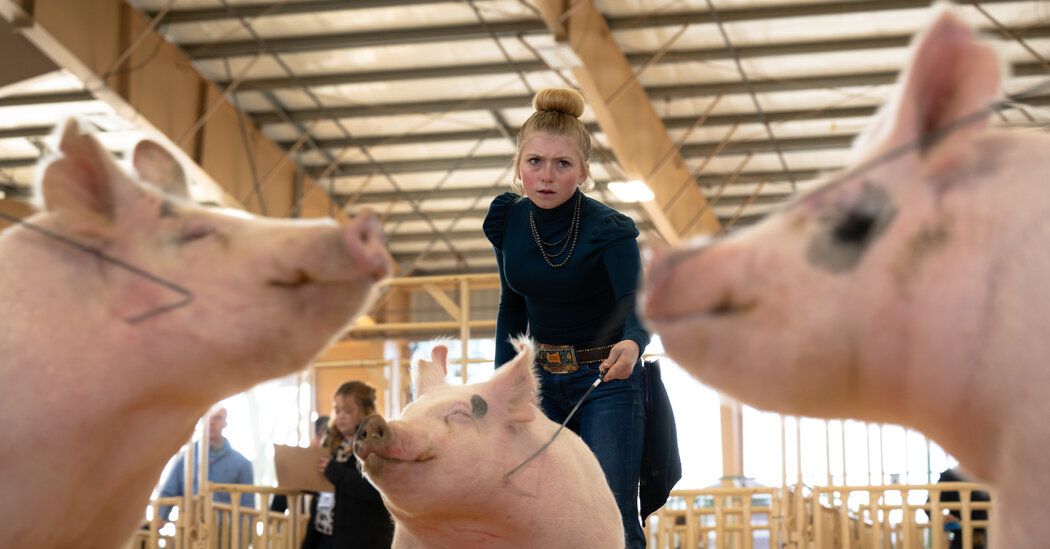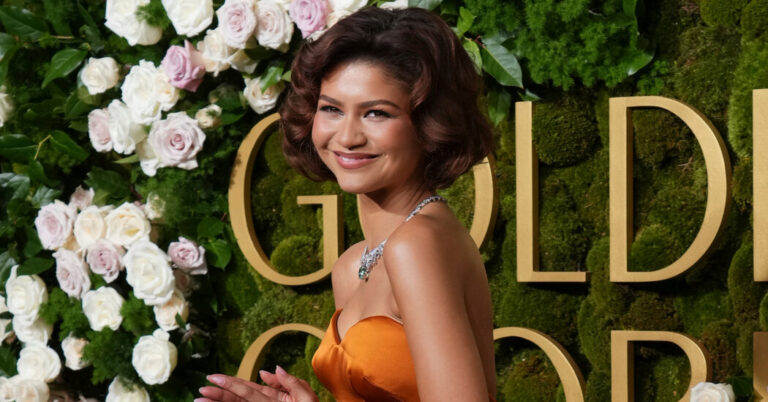Here is the text in plain form, without any HTML or formatting:
As she prepared to enter the pig ring on a recent weekend morning, Karis Dadson shifted her focus toward a judge who stood on a thick mat of sawdust shavings about 30 feet away. That focus took the form of an icy stare that has captivated the hundreds of thousands of people who follow Karis, 14, and her family on social media.
The same stare that has been celebrated by her fans – many of them young women – as empowering, “tuff” and the “meanest mug” in the game. The same stare that has been a source of inspiration to those who dream of emulating her while shopping for groceries, walking their dogs or confronting an annoying neighbor.
The same stare that has prompted such questions as: Who ticked her off? Does she feed her victims to the pigs? Can someone explain this to me?
And it was the same stare that was center stage last month at the Western Bonanza Junior Livestock Show, a three-day potpourri of denim, cowboy boots and expertly manicured animals – swine, sheep, goats and cattle – at the Paso Robles Event Center on the central coast of California. “The stare is iconic,” said Madelynn Gardner, 15, who ran up against Karis and her twin brother, Krew, in several contests over the weekend. “It’s a little intimidating.”
And it is purposeful. You just need to know a bit about livestock shows to understand it. A field of more than 50 boys and girls, along with their pigs, had been cut to 16 for an age-group final in “swine showmanship,” a specialty for Karis. In showmanship, the exhibitors, as the handlers are known, are evaluated at least as stringently as their pigs are. Judges call out instructions and base their decisions on a host of factors, including how effectively the exhibitors present their pigs, the pigs’ responsiveness to their commands and the pace at which the pigs move. (Optimal pace? Between a jaunt and a trot.)
Karis, who stands 5 feet tall, wore a dark top with leopard-print sleeves, bluejeans and a Navajo pearl necklace, with her blonde hair in a bun. She was accompanied by Johnny Ringo, a 9-month-old, 270-pound crossbred barrow pig she had scrubbed to an immaculate shine.
By tapping him with a pair of small, thin whips that bore a resemblance to conducting batons, Karis guided Johnny Ringo through the ring while steering clear of four-legged traffic. As friends and family members watched from metal bleachers, Karis’s mother, Karalyn, crouched outside the ring with her Canon EOS R10.
“I always tell my kids that you have to try the be the least amount of annoying,” Mrs. Dadson said. “If the judges can’t find something annoying, you might stay up there.”
Through social media, the Dadsons, who raise and sell pigs, have brought livestock shows – and, more specifically, the niche world of show pigs – to the masses. A palate cleanser for doomscrollers, the videos, many of which have surpassed 10 million views, are a smorgasbord of farm-themed infotainment: tutorials, explainers, show recaps and, of course, crowd-pleasing stares. Karis, in particular, has emerged as a surprising symbol of female focus and determination – not that she meant for any of that to happen.
More than 100,000 young people participate annually in pig shows across the country, according to Clay Zwilling, the chief executive of the National Swine Registry. But there is only one pair of Dadson twins, who, Mr. Zwilling said, offer a “positive example of the show livestock industry” to many who never would have known it existed.
Karis and Krew have handled newfound celebrity in their own ways. While Krew says he likes the attention, Karis seems bewildered by it all. She sometimes wonders: How did she and her brother wind up on Will Smith’s Instagram feed? Why are so many other kids asking for selfies? Is she really a 21st-century… mines them for material so that she can correct misconceptions.
“It’s constant,” Mrs. Dadson said. “They don’t understand how well we take care of them. We like to think that they got to live out their best lives.”
The Dadsons can often be found wearing baseball caps with branding for All N, a hydration supplement. Their pigs apparently swear by it.
The pigs were not the only stylish ones in Paso Robles. The girls favored flared, boot-cut jeans by 7 for All Mankind with the No. 7 embroidered on the back pockets. Many of the boys wore jeans, button-down shirts and quarter-zips by Cinch.
“You put all this effort into their outfits,” Mrs. Dadson said, “and then they get ruined so fast. Pig poop all over them. But we try to keep them looking presentable most of the day.”
Despite the scatological obstacles, the fashion world has been calling. Karis recently made her modeling debut, appearing in the first issue of Domina Journal, a biannual art and fashion magazine that describes itself as a “testament to the perseverance of the artistic feminine spirit.”
Last summer, staff members from the magazine spent a few days at the family farm and at the California Mid-State Fair, where Jay Barrett, Domina’s editor in chief and fashion director, said Karis managed to stand out amid “cowboys in 10-gallon hats, rows of livestock and the biggest American flags I’ve ever seen.”
“She commands attention,” Ms. Barrett added in an email. “A look seasoned industry models strive for, at just 14, she’s got it. She’s exactly what we were looking for: defining female power, in an unexpected way.”
Karis said the photo shoot was fun. She also got a kick out of the people who dressed as her for Halloween. (One woman cast her husband in a supporting role as the pig.) But she knew her life had changed last summer when she was recognized at a series of livestock shows in the Midwest.
“It’s just different,” Karis said. “It’s not like I’m mad about it, but it’s new. I’m getting used to it.”
In many ways, the Dadsons seem like accidental evangelists for the livestock life and the lessons they say it imparts to young people. Karis and Krew care for their pigs before and after school, feeding them, washing them, and training them. They typically compete at one show a month.
In the process, Mr. Dadson said, the twins have learned how to create budgets and manage their time. Karis, who wants to work in agriculture when she grows up, said she was proud to be a part of her community.
“You could go up to any group in the pig barn,” she said, “and they would give you a three-course meal.”
Source link




